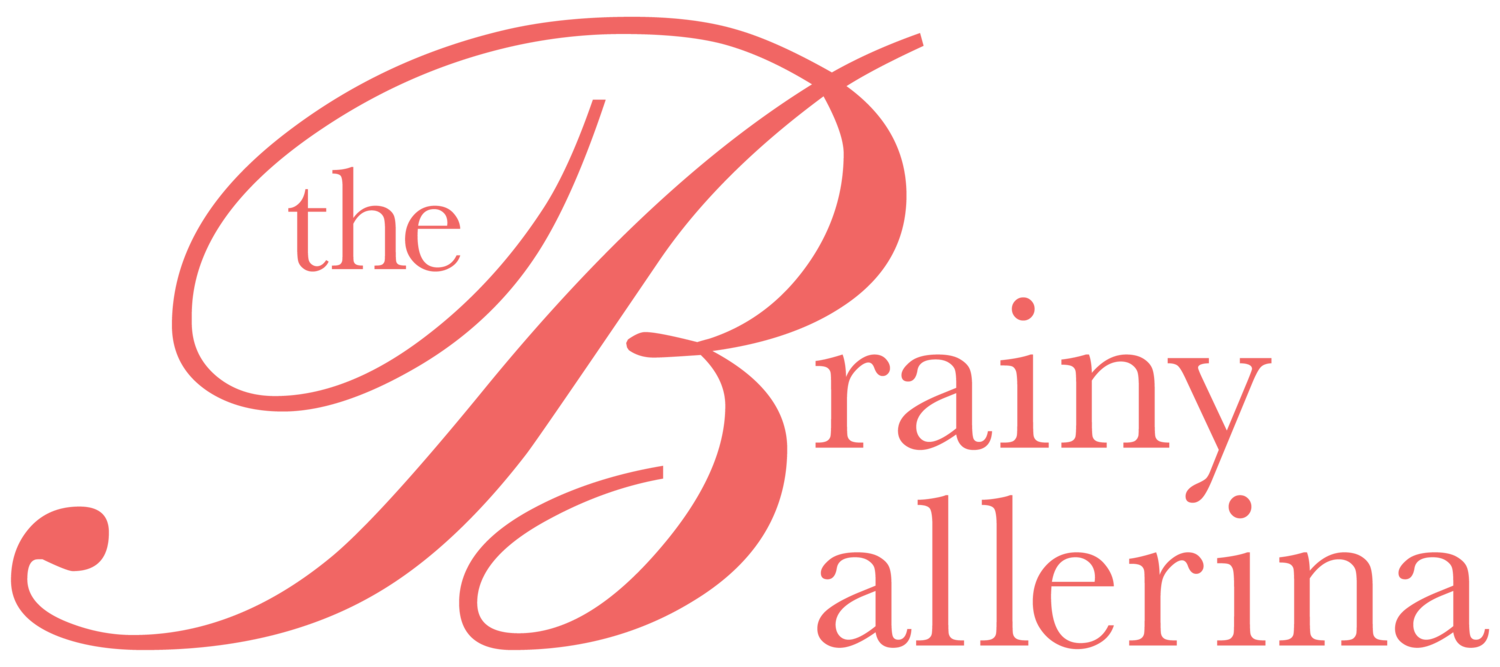When Can I Go on Pointe?
I’ll never forget how excited I was to get my first pair of pointe shoes (a shiny pair of Bloch Suprimas).
For a young ballerina, going on pointe felt like the ultimate accomplishment. I had watched the older dancers with such reverence, just counting down the days until I could join that special pointe shoe club.
Getting your first pair of pointe shoes is a BIG deal!
While you may be anxious to take this next step in your training (I know I certainly was!), it is essential to wait until you are ready physically, emotionally, and mentally.
So why do us ballet teachers make such a fuss about making sure you are prepared for this milestone?
Because going on pointe too soon can permanently damage immature bones.
According to Dr. Katherine Millis of Excelerate Physical Therapy, “Pointe places excessive stress on the dancer’s feet, especially if that dancer is too young or physically unprepared to begin this specialized training. Bone maturity is reached between the ages of 13 & 15. The dancer needs to be able to support the bones in their feet to safely begin dancing en pointe.”
Pointe work is beautiful, but nothing is worth causing life-long detriment to a young, growing dancer. We care too much about you for that! (You know when you ask your parents why you can’t do something and they say “It’s for your own good.”? It's just like that.)
So how do your instructors know you’re ready to start pointe? Here are a few things we’re looking for:
✅ Minimum age of 12 (some dancers may be considered at 11 but are typically asked to obtain an x-ray and a recommendation from their doctor)
✅ Proper placement in relevé (weight toward first and second toes)
✅ Sufficient ankle flexibility to point foot fully and obtain a high relevé
✅ Strong overall postural strength and coordination
✅ Able to maintain turnout while dancing
✅ Emotional maturity (the ability to stay focused and apply corrections)
✅ At least three years of ballet training
✅ Attending at least three ballet classes per week
Additionally, Dr. Millis looks for the ability to piqué onto a straight leg and perform 16 consecutive and technically correct relevés in center to ensure adequate calf strength.
If you consistently show proficiency in these areas, you may be ready for pointe...but not necessarily! Only an experienced instructor who has been working with you closely knows when you are ready.
I know you are anxious to take this next step in your training. But whatever you do, DO NOT purchase pointe shoes without a teacher's approval. Trust your instructor's expertise. You have your entire career to dance on pointe...there is no rush!
Dancing on pointe is fun, but it’s even better when performed safely. Be safe, be strong, and dance on!
P.S. For my dancers or instructors getting ready to start pointe themselves or with their students - check out The Brainy Ballerina Guide to Pointe Shoes. I’ve got loads more information all about pointe shoes (anatomy and history of pointe shoes, sewing and tying your shoes, FAQs, pointers for parents, and more!). It’s the perfect introduction for beginning pointe students!
Meet the Author
Caitlin Sloan is a Dance Educator and Career Mentor based in Madison, WI.
Caitlin received her Bachelor of Arts in Dance from Grand Valley State University and Graduate Certificate in Nonprofit Management from the University of Missouri.
She danced professionally for nine years with companies including Ballet Tucson and Missouri Contemporary Ballet (now Mareck Dance). Caitlin has taught at schools all over the Midwest, most notably serving as Director of The School of Missouri Contemporary Ballet and Youth Company Director for Central Indiana Dance Ensemble. She is currently on faculty at the School of Madison Ballet.
Caitlin founded The Brainy Ballerina® in 2019, a virtual resource providing support and guidance for aspiring ballet dancers. Follow @thebrainyballerina on Instagram for your daily dose of dance career guidance and inspiration.
If you liked this post, you might also like:




